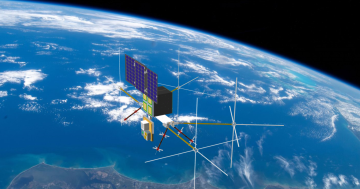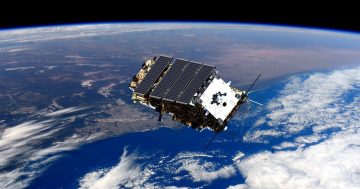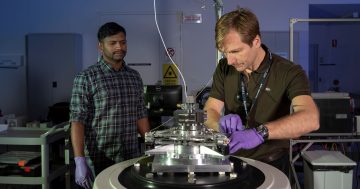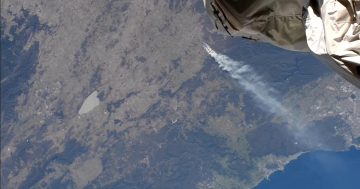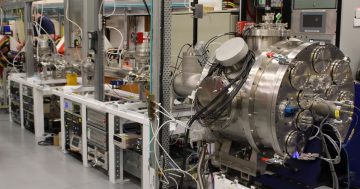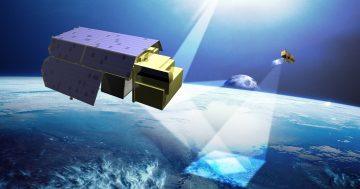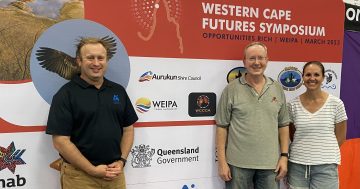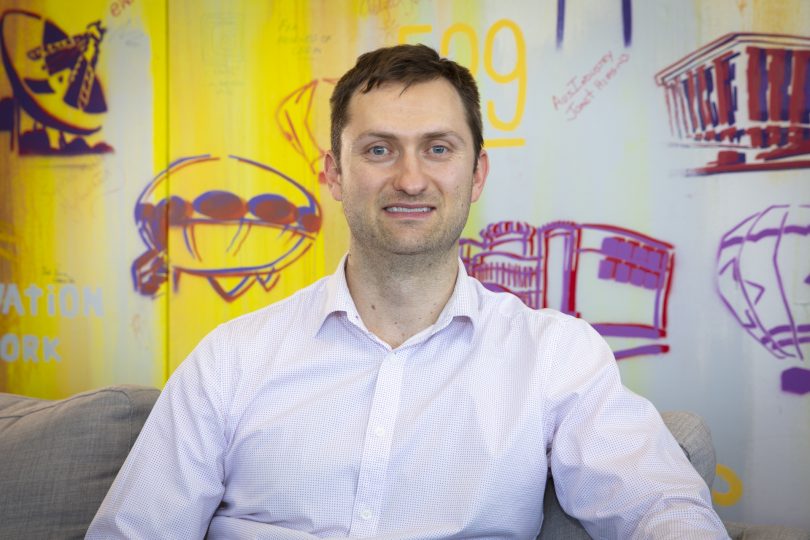
Dr Trevor Lafleur works remotely out of the Canberra Innovation Network and has helped develop a new iodine satellite propulsion technology. Photo: Thomas Lucraft.
A Canberra-based physicist and engineer has played an important role in the world-first testing of a ground-breaking, iodine-fuelled electric satellite propulsion system.
ThrustMe principal engineer Dr Trevor Lafleur says in-orbit tests have confirmed iodine is a propellant that can provide small satellites with vital collision avoidance and deorbiting capabilities, as well as new manoeuvring and space exploration potential.
Dr Lafleur says xenon gas, which is currently used for satellite propulsion, is an expensive commodity and in short supply.
“Iodine is a more abundant and cheaper alternative than xenon and can be stored unpressurised as a solid, making it ideal for smaller satellites,” he said.
Iodine has been investigated as a propellant by a number of universities, companies and space agencies over the past 20 years, but no iodine propulsion system has previously been launched or tested in space; until now.
“This is a big milestone for the space industry,” Dr Lafleur said.
READ ALSO: What is collaborative innovation, and why is it so hard?
With market projections estimating that more than 24,000 satellites could be launched within the next 10 years, the space industry demand for xenon is expected to exceed supply.
Dr Lafleur says it’s critical that a replacement propellant is found.
“We’re seeing such an explosion in the space industry around the world,” he said.
“Everyone’s launching satellites and many have no propulsion system at all.
“There’s a shift towards constellations of hundreds, even thousands of satellites, so there’s [sic] huge sustainability issues around using xenon gas into the future.”
Many small satellites have no propulsion system so, when their mission is completed, they’re left to become space debris and may only re-enter the Earth’s atmosphere after many years, if ever.
Dr Lafleur says the iodine propulsion system will allow satellites to deorbit at the end of a mission, therefore reducing the number of abandoned machines in orbit.
The system can also be fired up to manoeuvre satellites and avoid potential collisions with other satellites or space junk.
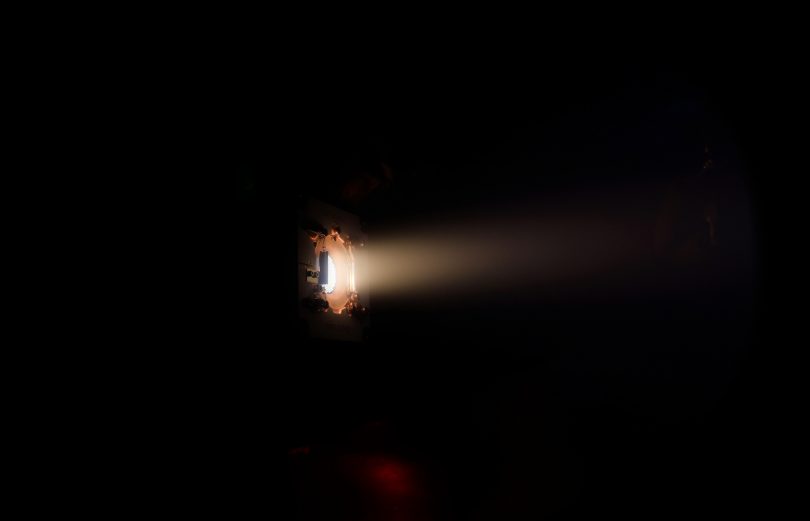
In-orbit tests have confirmed iodine is a propellant that can provide satellites with vital collision avoidance and deorbiting capabilities. Photo: ThrustMe.
ThrustMe’s in-space demonstration is a world-first and results have been rigorously peer-reviewed and recently published in one of the leading scientific journals, Nature.
ThrustMe CEO and a former postdoctoral researcher at the Australian National University (ANU), Ane Aanesland says publication of the historic results is an important milestone for the space industry.
“Many new companies have entered the market in recent years but demonstrated evidence of flight heritage and performance transparency are missing,” she said.
“Having our results peer-reviewed and publicly accessible provides the community with further confidence and helps to create a benchmark within the industry.”
Dr Lafleur says the capability of modern electronics and easier access to space has resulted in a shift towards small satellites and new space-based applications for Earth observation.
The miniature satellites are used for disaster management, climate change monitoring, urban planning and global internet access.
Iodine propulsion systems are lighter and much more compact than traditional systems that require large gas storage tanks, making them ideal for the growing number of small satellites.
“High-performance propulsion systems using a breakthrough propellant like iodine will prove instrumental in the coming decade, particularly as humanity returns to the moon and expands further into space,” Dr Lafleur added.
READ ALSO: You won’t believe what’s in this new BentSpoke beer
Founded in 2017 with a headquarters in France, ThrustMe aims to create a future where space is used sustainably to create value both on Earth and beyond.
While his colleagues are based on the other side of the world, Dr Lafleur performs propulsion system R&D, product development and space mission analysis remotely out of the Canberra Innovation Network (CBRIN).
He said working at CBRIN “just made sense” and has provided him with an enriching environment surrounded by like-minded innovators.
“The centre is a focal point for innovation within the ACT and, with regular space seminars and forums, has provided me with significant networking opportunities with some very interesting people,” he said.
Startups, entrepreneurs, researchers and innovators can be connected through the Canberra Innovation Network’s Coworking space located in the heart of Canberra City.












